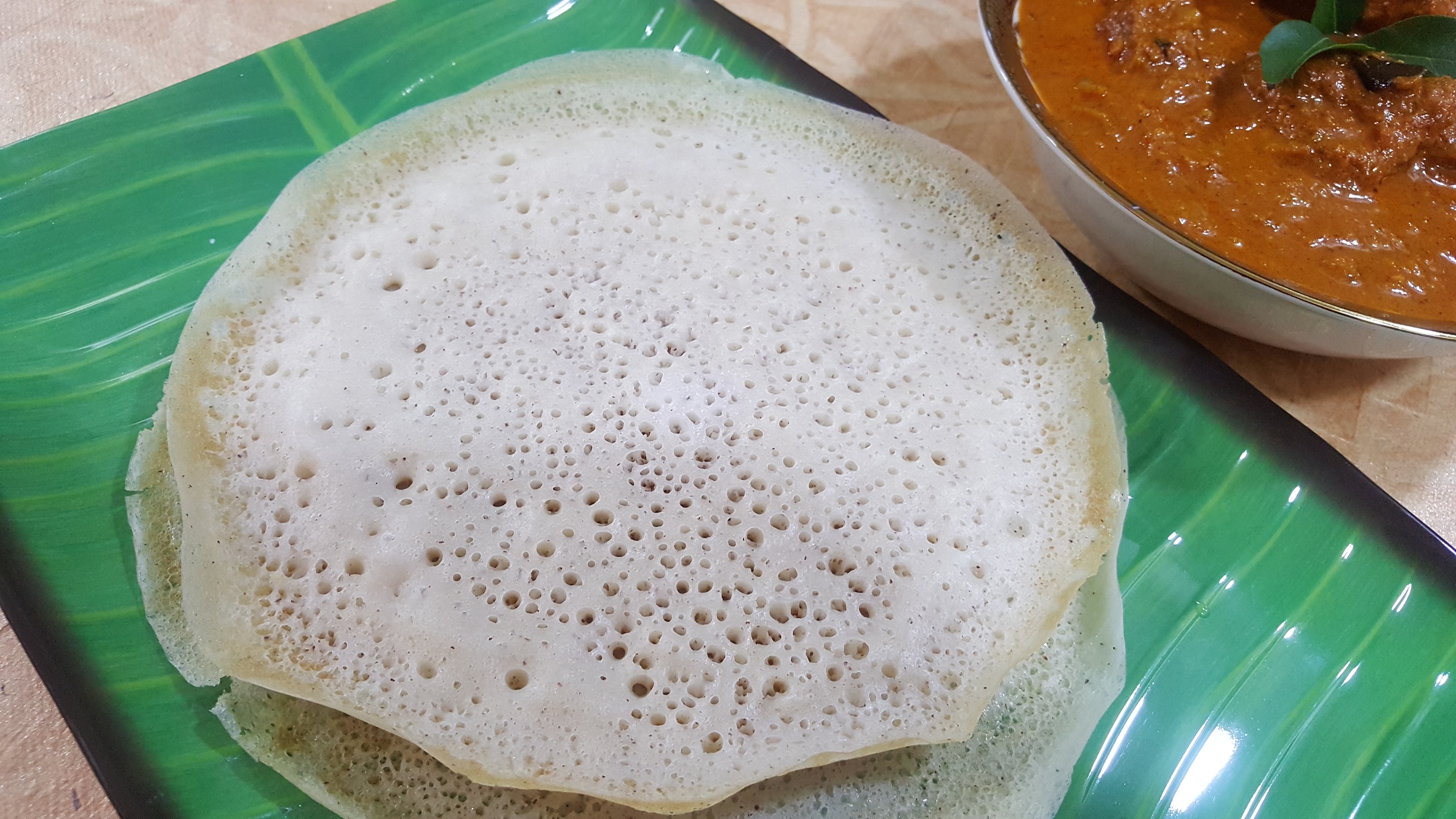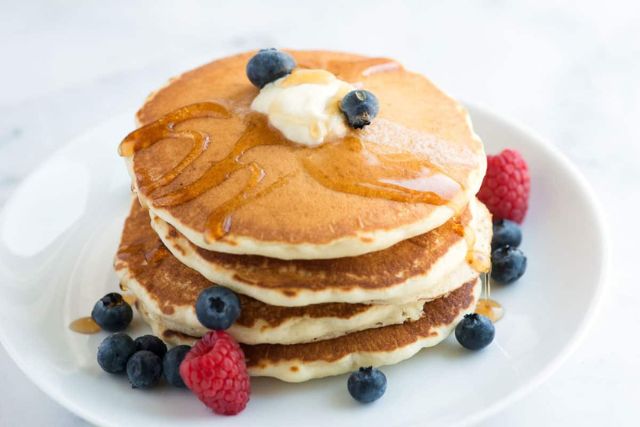Kerala Appam Recipe (Without Yeast): Authentic Tradition in Every Bite
Delve into the rich culinary heritage of Kerala with an age-old recipe that tantalizes taste buds and evokes nostalgia – the beloved Kerala Appam Recipe. Renowned for its spongy texture, delicate flavor, and crispy edges, this quintessential South Indian dish is a staple in Kerala households. Whether served with luscious coconut milk or savory curries, Appam holds a special place in the hearts and palates of many. In this article, we unveil the secrets to mastering the art of making Kerala Appam Recipe without yeast, ensuring authenticity and flavor in every bite.
What is Appam or Vellayappam or Palappam?
Appam, also known as Vellayappam in Malayalam, is a traditional South Indian pancake made from fermented rice batter. Its distinctively thin, lacy edges and soft, spongy center make it a favorite breakfast or dinner option across Kerala and other parts of South India. Appam is typically prepared using a special curved pan called the Appam Chatti or Palappam Chatti, often made of cast iron, which helps achieve the perfect texture and shape.
Ingredients
To prepare authentic Kerala Appam without yeast, you will need:
- Raw Rice – 2 cups
- Grated Coconut – ½ cup
- Cooked Rice – ½ cup
- Sugar – 1 tablespoon
- Salt – ½ teaspoon
- Water – as needed
- Optional: Coconut Water for extra flavor (substitute for some of the water)
Instructions
- Soak the Rice: Begin by soaking the raw rice in water for about 4-5 hours or overnight. This step ensures that the rice grains soften, making them easier to grind later.
- Grind the Batter: Once the rice is properly soaked, drain the water and transfer the rice to a blender. Add grated coconut, cooked rice, sugar, and salt to the blender. Gradually add water and grind the mixture to a smooth, thick batter. The consistency should be similar to that of pancake batter, neither too thick nor too thin.
- Fermentation: Pour the batter into a large bowl and allow it to ferment overnight or for at least 8 hours. The fermentation process is crucial as it imparts a slight tanginess to the batter and helps in achieving the characteristic sponginess of the Appam.
- Prepare the Appam Chatti: Heat the Appam Chatti or Palappam Chatti on medium heat. Traditionally, these pans are made of cast iron, which helps distribute heat evenly and gives the Appam its signature texture. Lightly grease the pan with oil or ghee.
- Make the Appams: Once the pan is sufficiently heated, pour a ladleful of the fermented batter into the center of the pan. Immediately, lift the pan from the heat and swirl it in a circular motion to spread the batter evenly, creating a thin layer around the edges and a slightly thicker center. Cover the pan with a lid and cook the Appam on low heat for 2-3 minutes or until the edges turn crispy and golden brown, and the center is cooked through.
- Serve Hot: Once cooked, gently remove the Appam from the pan using a spatula and transfer it to a serving plate. Repeat the process with the remaining batter, greasing the pan lightly before making each Appam. Serve hot with your favorite accompaniments such as coconut milk, vegetable stew, or spicy curries.
Mastering the art of making Kerala Appam Recipe without yeast is a delightful journey that allows you to savor the authentic flavors of South India in the comfort of your home. With simple ingredients and traditional techniques, you can recreate this beloved dish and experience the joy of sharing a delicious meal with your loved ones. So, grab your Appam Chatti, gather your ingredients, and embark on a culinary adventure that celebrates the rich heritage of Kerala cuisine, one delectable bite at a time.
FAQs
What is the significance of using a Palappam Chatti or Appam Chatti in preparing Kerala Appam Recipe?
The Palappam Chatti or Appam Chatti is a traditional curved pan, often made of cast iron, that helps in achieving the perfect texture and shape of Kerala Appam. Its unique design allows for even distribution of heat, resulting in crispy edges and a soft, spongy center, essential characteristics of authentic Kerala Appam Recipe.
Can I make Kerala Appam without yeast? What are the alternative methods for fermentation?
Yes, Kerala Appam can be made without yeast. Instead of yeast, the batter is fermented naturally using ingredients like cooked rice or toddy (fermented coconut palm sap). Alternatively, you can use natural fermentation by allowing the batter to sit at room temperature for several hours, typically overnight, to develop its characteristic flavor and texture.
How do I achieve the perfect texture of Appam – crispy edges and soft center?
To achieve the perfect texture of Kerala Appam, ensure that the batter has the right consistency – not too thick or too thin. Use a well-seasoned Palappam Chatti or Appam Chatti to cook the Appam, and maintain medium heat. Swirl the pan immediately after pouring the batter to spread it evenly, creating thin, lacy edges and a thicker center. Cover the pan while cooking to trap steam and cook the center thoroughly while crisping up the edges.
Are there any variations to the traditional Kerala Appam recipe, such as adding coconut water or different types of rice?
Yes, there are variations to the traditional Kerala Appam recipe. Some recipes call for the addition of coconut water instead of regular water to enhance the flavor. Additionally, you can experiment with different types of rice, such as parboiled rice or idli rice, to achieve variations in texture and taste while staying true to the essence of Kerala cuisine.
What are some popular accompaniments for serving with Kerala Appam, besides coconut milk?
Besides coconut milk, Kerala Appam pairs well with a variety of accompaniments. Common choices include vegetable stew (Ishtu), spicy curries like chicken or fish curry, egg roast, or even sweet accompaniments like jaggery syrup or banana slices. The versatility of Kerala Appam Recipe allows you to explore different flavor combinations and create a satisfying meal experience.






